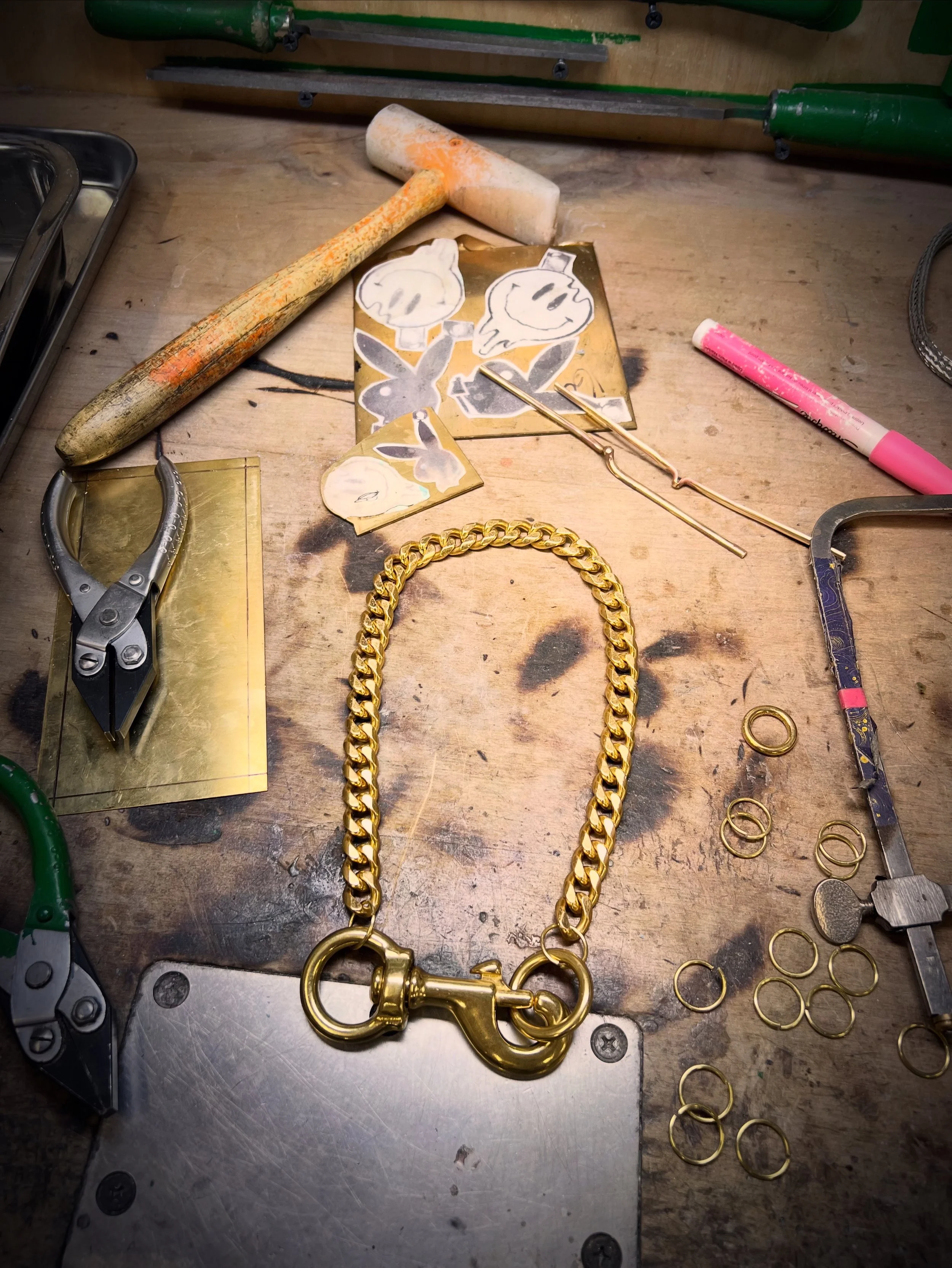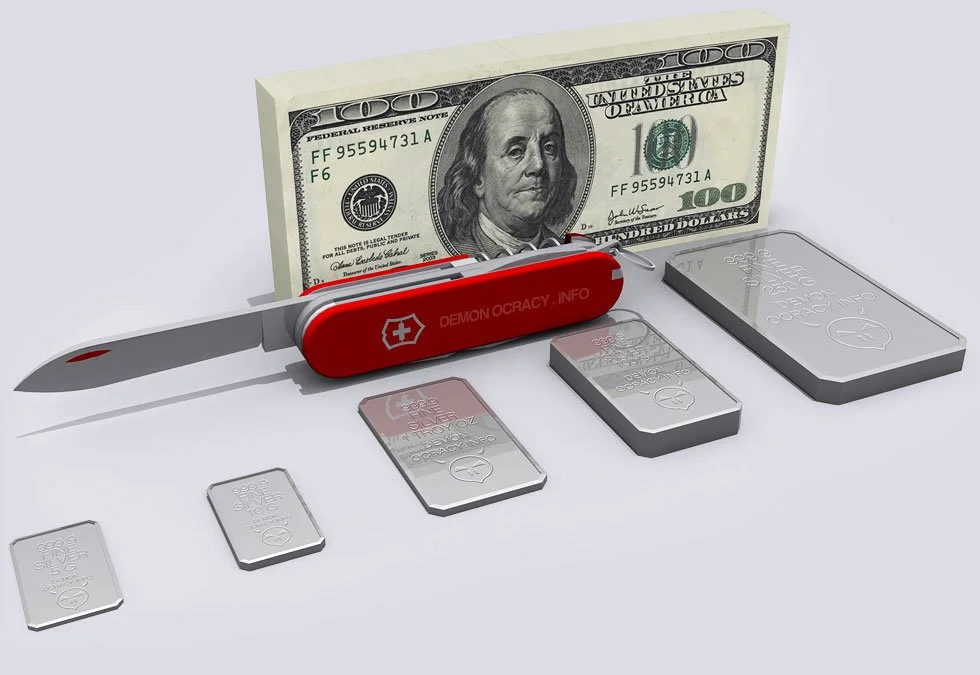⚡ Let’s Talk Metal…
Brass sheet and jewelry tools on a workbench — hammer, saw, pliers, and a finished chain from the TN’L Supply studio
Not the music kind — though I’m a big fan.
The elements and alloy kind.
There are a lot of rigid perceptions around the metals used in jewelry — what’s considered desirable or valuable, and what isn’t.
I want to challenge that a bit. Because while everyone’s talking about gold and silver prices skyrocketing, there’s a much bigger story in what these shifts mean for the people making jewelry, the people wearing it, and how we define value in the first place.
As of today, silver is sitting around $49.95 an ounce, and gold is over $4,100.
Platinum and palladium are both in the $1,400–$1,500 range.
Silver alone has jumped more than 50% this year, and it’s not slowing down.
🧱 What an Ounce of Metal Really Looks Like
Silver bar size comparison next to pocket knife and $100 bill – showing how little one ounce of metal actually is.
If you’ve ever wondered what an ounce of metal actually looks like, the image above helps put it in perspective.
Those small bars at the front? That’s one ounce — not much material when you start thinking about a heavy chain, a solid cuff, or even a pendant.
The truth is, one ounce of metal doesn’t go as far as most people think.
Every jump in price ripples through design, scale, and what’s even possible to make.
When metal prices go up, everyone feels it — from big manufacturers to small studio jewelers like me.
🔥 What’s Driving the Price Surge
Industrial demand: Silver is essential in solar panels, electronics, and medical tech — not just jewelry.
Mining limits: Most silver is mined as a byproduct of other metals, so production can’t easily ramp up.
Market behavior: Investors use metals like silver and gold as “safe havens” during economic uncertainty.
It’s a perfect storm that’s pushed prices up fast — and no, it’s probably not coming back down anytime soon.
💸 What This Means for Jewelry Prices
When the cost of silver and gold rises, so does the price of finished jewelry — whether it’s handmade or mass-produced.
Manufactured jewelry might hide it through thinner metal, lighter chains, or more plating.
Handmade jewelry doesn’t have that buffer. If silver doubles, the cost of materials doubles too — before labor, finishing, or packaging even enter the equation.
You’re not just paying for design — you’re paying for real metal, real labor, and real shifts in a volatile market.
⚒️ Why I’m Focusing on Accessible Metals
Brass and bronze are beautiful, period.
They’ve been used for thousands of years — sculptural, ancient, warm, and full of life.
I want to push back on the old idea that value = precious metal.
Value should come from design, craft, and intention, not the market price of an ounce.
Working with accessible materials lets me make pieces that feel bold, weighty, and expressive — without compromising quality or scale. You still get studio craftsmanship and integrity, just without the chaos of the silver and gold markets baked into the price.
🧪 Metal 101: Alloy Breakdown
Yellow Brass → ~67% copper + ~33% zinc — bright, gold-toned yellow
Red Brass (Jeweler’s Brass) → ~85% copper + ~15% zinc — warmer, reddish hue with vintage depth
Bronze → copper + tin (sometimes with traces of aluminum or phosphorus) — rich brown-gold tone that deepens beautifully over time
Nickel Silver (German Silver) → ~60% copper + ~20% nickel + ~20% zinc — silvery-white finish with no actual silver content
Each alloy reacts differently to time, wear, and patina — which means every piece develops its own personality the more you wear it.
💬 Final Thoughts
Metal prices are constantly shifting, but good design shouldn’t depend on Wall Street.
My goal is to keep creating accessible, intentional, and substantial jewelry — work that feels grounded, tactile, and personal, no matter the material.
Brass, bronze, and nickel silver aren’t stand-ins — they’re a choice.
They’re the foundation of a more honest kind of value.

